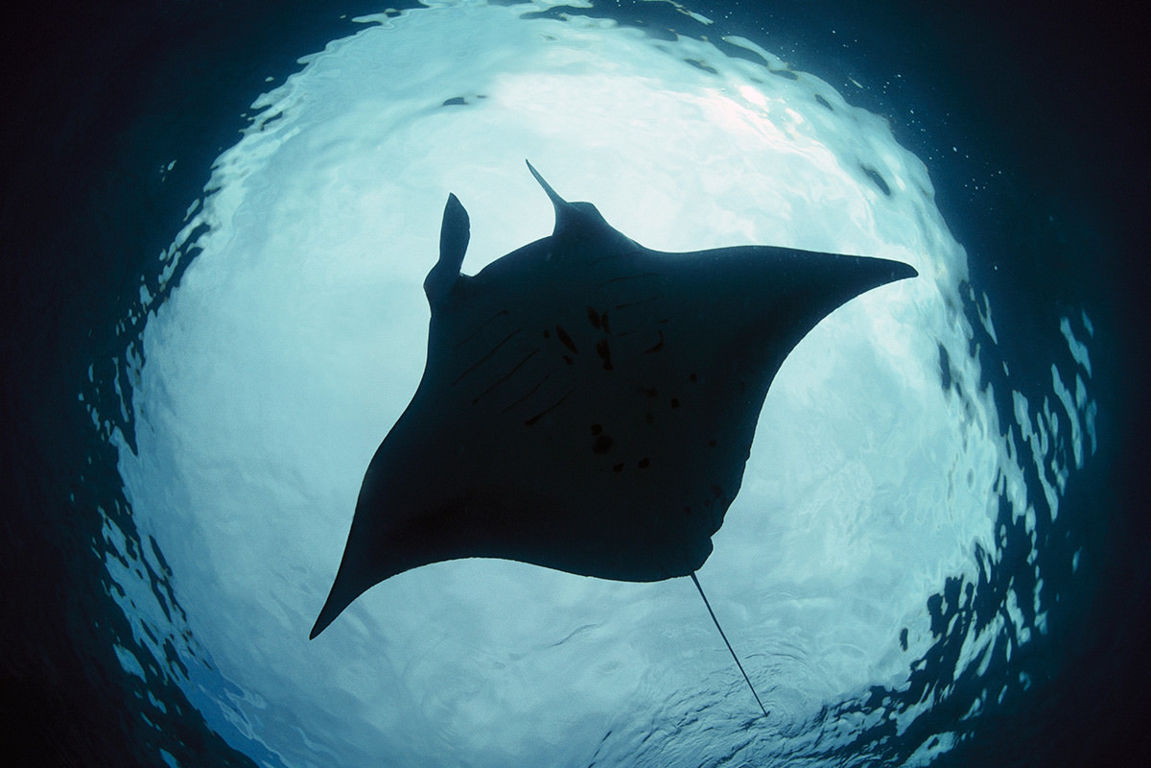
A Team of Women Conserve the Giant Gentle Manta Rays
by Yash Saboo May 2 2018, 6:50 pm Estimated Reading Time: 2 mins, 44 secsAt up to 23 feet wide and 5,300 pounds, calling a manta ray “giant” is an understatement. Manta rays have the biggest brain of any fish, so underwater genius is more like it. Disproportionately large as compared to the rest of its body, a manta ray’s brain more closely resembles that of an equally large mammal. Though enormous, these planktivores are truly gentle giants. Scientists’ best guess puts a manta ray’s lifespan at 40-50 years, but, as scientific tracking of individuals increases, we could find that the massive fish live as long as 100 years.
As its name suggests, the giant manta ray is the biggest ray out there. While the Caribbean and reef manta rays are slightly smaller, they are still massive, and can reach more than 16 feet wide and 3,000 pounds. Scientists believe that many of the manta rays that they originally considered giant manta rays are actually a similar, but genetically and physically distinct third species, tentatively described as the Caribbean manta ray.

Source:Scientist
Jessica Pate, an expeditor who used to study turtles earlier got tantalized by the magnificent manta rays, along with her crew ventures out on the water, collecting as much data as they can and trying to catalogue the manta rays in the area. She also soon learned no one else was studying them. Eager to find out more, she convinced a friend to take her out on the water to search for the rays.
Manta rays are considered vulnerable to extinction by the International Union for the Conservation of Nature. Worldwide, there are very few known nursery habitats for manta rays, so protecting this one off the eastern coast of Florida is vital.
By 2016, the Florida Manta Ray Project gained traction. Though many people help out, many days it is just Pate, photographer Bethany Augliere, and their intern on the boat. Most of their research days involve going out in search of the rays. When they do, Pate stands on the bow of the boat as high as she can get for the best vantage of the surrounding waters. From there, Pate looks for big black shapes. “I can tell you I’ve identified every manta-shaped rock in Palm Beach and Martin County, Florida,” said Pate.
For their research, Augliere’s underwater photography skills are vital. When the crew locates a manta ray, they get in the water, and Augliere takes a picture of the manta ray’s belly. Each manta ray has a unique spot pattern, so these photographic records help Pate’s crew recognize and track individual rays.
The first step, which Pate and her crew are already undertaking, is to assess the possible threats to the area’s manta rays. “28% of them have either a foul-hook or are entangled with fishing line,” said Pate. “So, our next step is to figure out where this is happening and how this is happening, and then we can figure out ways to mitigate or stop it.”
There are two known species of this giant fish and there is possibly a third. Which is another reason why conversation of the manta in this area is important is because they may represent a new species.








-173X130.jpg)
-173X130.jpg)
-173X130.jpg)
-173X130.jpg)